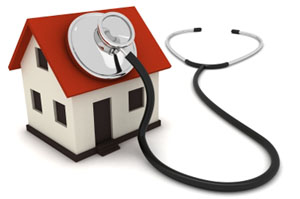One of the persistent questions about the Affordable Care Act is how are so many people, new to insurance, going to get quality health care when the system seems so strapped already. The law does have an answer to that: the medical home. But it is not a concept that is widely understood yet.
St. Francis Family Medicine near Richmond, Virginia is, like many medical practices in America, evolving into a medical home, where health care services are coordinated to manage each patient’s care.
That means patients come or call the practice first when they have a problem, and it means a team of physicians, nurses and other professionals take care of patients and keep tabs on their conditions over time. The team makes sure patients are taking medicines properly, getting timely preventive care and that no unnecessary tests are done.

Dr. Rupen Amin say that frees him up to do his job.
“You have more time to build a relationship with your patient and make those decisions that you need to, without having to worry about the small things,” Amin says.
Medical homes use computerized record-keeping to track patients and to watch for trends that might signal the need for new treatments. All of this sounds expensive, and at first it may be, but two large scale programs suggest medical homes may save a great deal of money over time.
The first of these demonstration projects began seven years ago in Richmond. It’s called the Virginia Coordinated Care for the Uninsured Program or VCC. Linda Ford enrolled after coming down with a miserable case of shingles.
“I was in a tremendous amount of pain, and did not know what was going on with me,” Ford says.
Ford wanted to see a doctor, but she had no insurance. By law, hospital emergency rooms must provide care for the uninsured, so Linda ended up at Virginia Commonwealth University’s medical center – home base for VCC. Through the program, she was able to see a primary care doctor at no charge. He prescribed medication to help prevent a recurrence of shingles and began treating her for high blood pressure – something she knows is important.
“Because if you don’t treat high blood pressure, you sometimes have a heart attack and die,” says Ford.
Virginia Commonwealth says it eventually enrolled more than 26,000 people in the program that helped Ford.
“Our patients had lower utilization of the emergency room, fewer in-patient admissions, and the overall cost of care went down,” says VCU Health System Vice President Sheryl Garland.
At first, it cost about $8,000 a year on average to care for a patient, but for those who stayed in the program at least three years costs dropped by 50 percent.
In California, statisticians saw a similar trend in the Healthy San Francisco program. It started six years ago, funded by the city, county, local employers and donors. Thirty-seven clinics and medical practices provided care at little or no cost to about 49,000 people who were allowed to choose the “medical home” that appealed to them.
“That’s so important, because we really want to ensure continuity of care and relationship building with a particular medical home, and providers in that medical home,” says Healthy San Francisco Program Director Tangerine Brigham.
Brigham says costs dropped an average of $540 per patient per year. Many of the patients have chronic conditions – diabetes, high blood pressure, congestive heart failure or asthma. But Brigham says seeing a medical professional on a regular basis keeps them out of the hospital and emergency room – expensive places for care.
“When you get individuals with chronic conditions into stable care, where they really are able to maintain their medication regimen, their visit regimen, we can do group visits with them, all of those things really do ultimately contribute to improved health,” Brigham says.
And the program gets good reviews. A 2009 survey by the Kaiser Family Foundation showed 94 percent of Healthy San Francisco’s patients were satisfied with their care (KHN is an editorially independent program of the foundation). VCC’s Sheryl Garland hopes to collaborate with Healthy San Francisco on future studies and to release updated statistics on Virginia Coordinated Care this summer.
This story is part of a partnership that includes NPR, Virginia Public Radio, and Kaiser Health News.






